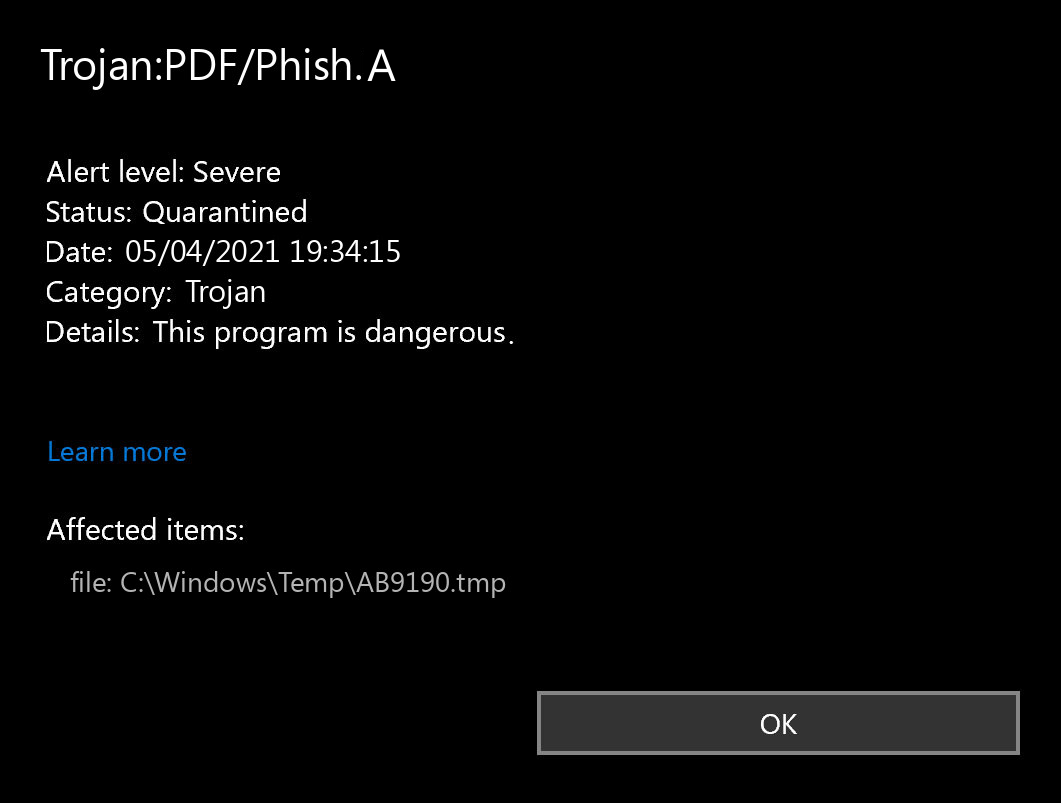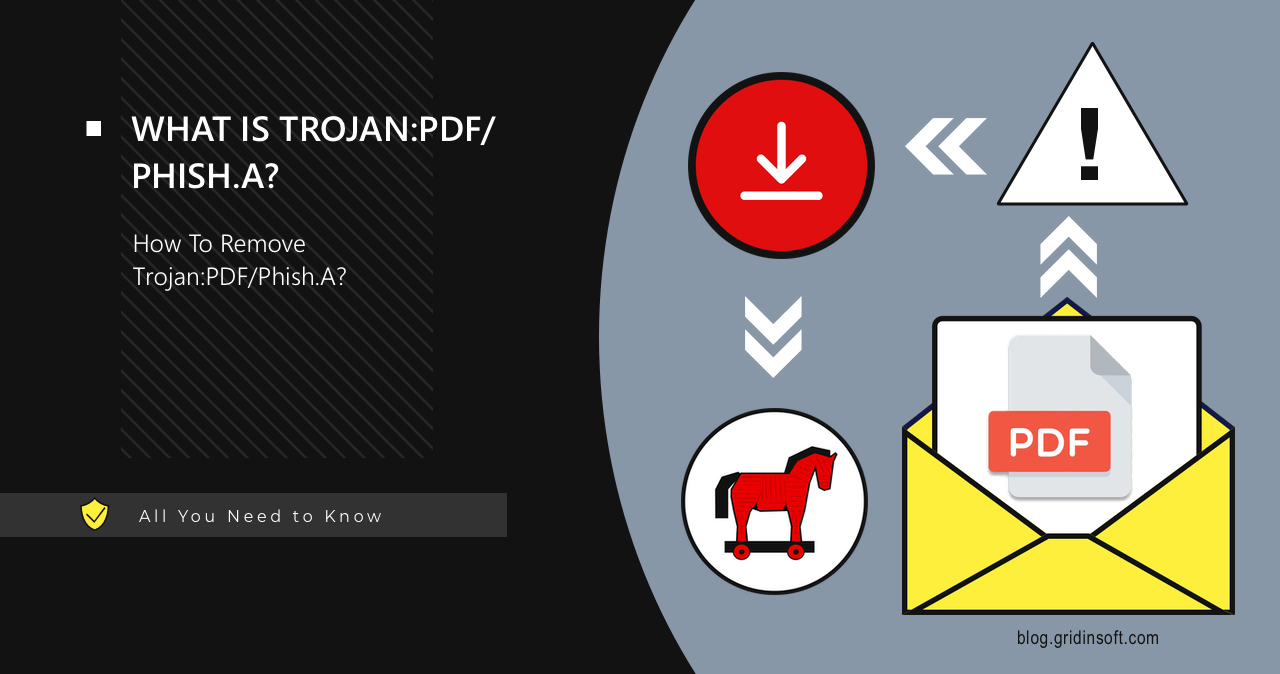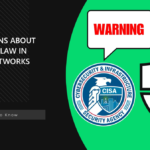Trojan:PDF/Phish.A is detection of a PDF file which potentially carries a malicious link or script designed to harm the system. This embedded malicious script may download additional malware onto the target system, or cause other kinds of disruptions. Let me quickly overview the detection and show how to remove it.
What is Trojan:PDF/Phish.A detection?
Trojan:PDF/Phish.A is a detection by Microsoft Defender for specific malicious files. As the name suggests, it is a malicious object disguised as a PDF document. The file aims to deceive users into clicking on a malicious link. To achieve this, the PDF includes enticing text alongside a malicious link designed to lure the victim into clicking.

The PDF file itself may look like a completely normal document, a part of work documentation or something along these lines. Having it on your PC does not inherently mean being infected with malware (though I would still recommend performing a scan), it is the link in the file that can give the situation a foul tint.

It is typical to see Trojan:PDF/Phish.A spreading through malicious email messages, often targeted on specific persons. These emails often include the file as an attachment, masquerading as official documents of some sort. Text of these messages is built around social engineering techniques, and imitates the branding or tone of legitimate companies, to make the entire situation look like a routine mailing. And that, in turn, makes the user confident that clicking the link is totally fine.
Email spam is one of the oldest tactics that cybercriminals use in their operations. Keen to know how to prevent them from appearing? We have a guide dedicated to stopping email spam and unwanted emails as a thing, go check it out.
Is Trojan:PDF/Phish.A a False Positive?
Yes, Trojan:PDF/Phish.A may occasionally be a false positive detection. This occurs because even a genuine link in a PDF file may be considered malicious in certain situations. Such detections may arise if a site has previously been compromised, hosts suspicious content, or features subdomains used by attackers to distribute malicious files. That does not mean this link will lead to these malicious contents, it is just the website may have a bad reputation.
Such a situation often happens to websites that host user-generated content, like file-sharing websites, link shortening services or pastebins. Fraudulent actors often exploit such services to sneak malware into user systems through a legitimate-looking page. If you see a link leading to the website I’ve mentioned, be sure to scan it before interacting with any content on it.
How Does it Work?
Now that we understand what this threat is, here’s a brief overview of how it operates. The file contains a malicious link, and a text note saying to click it for certain reason. In one of the cases I’ve studied, the link led to a website that immediately started file downloading, and the PDF text encouraged to run this file upon downloading.
The tests show that the downloaded file queries registry keys to identify active software policies and determine the presence of antiviruses. The findings go further with the malware temporarily storing its files in the Temp folder, deleting them afterward to hinder analysis. Although specific actions may vary between samples, the general behavior remains consistent. It is likely that this malware is some kind of infostealer virus or spyware.
How to Remove Trojan:PDF/Phish.A?
To remove Trojan:PDF/Phish.A effectively, using advanced anti-malware software is recommended. GridinSoft Anti-Malware can eliminate the threat and ensure long-term protection against similar malware in future. Download it by clicking the banner below, and enjoy the full protection of your system in the 6-day free trial.





